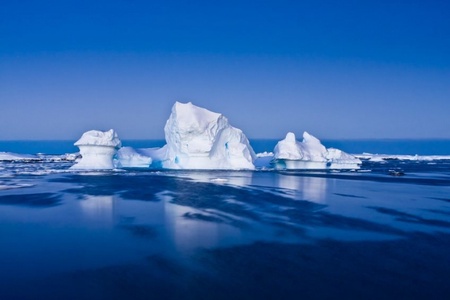Scientists at the University of Aberdeen have deepened our understanding of how polar ice escapes into the ocean by studying a site in mainland Europe.
The site near Poznan in Poland was sculpted over 20,000 years ago when much of northern Europe was covered in ice. The landscape there now appears as a series of landforms organised into ridges and troughs, over which a fast flowing ice stream once moved.
By studying this site, scientists have gained a valuable insight into the behaviour of ice streams, which represent the arteries of ice sheets and deliver ice rapidly to the ocean, contributing to rising sea levels.
Very little is known about how ice streams are formed and what governs their dynamic behaviour, but scientists believe that the interaction between the flowing ice and its bed of sediment is fundamental.
Present day ice stream beds are buried under kilometres of ice and therefore inaccessible, however by studying the Polish site, scientists found a way around this problem. The result is they now have a far greater understanding of the processes by which ice streams move over the bed.
The study, which has been published in Nature Communications, was led by Dr Matteo Spagnolo and Dr Brice Rea from the University’s Department of Geography and Environment.
Dr Spagnolo explained: “The flow of polar ice towards the ocean is focused on ice streams which drain the ice from the interior towards the ocean, so we need to understand what controls these streams if we are to form a better understanding of rising sea levels caused by polar ice sheet melting.
“One key component of this process is how ice streams interact with their bed, which could consist of rock or sediment. However, this is a difficult area to study because it’s impossible to fully observe what’s going on beneath two or three kilometres of ice.
“However, there are environments that used to be occupied by ice streams where the landscape is organised into a series of ridges and troughs that we call mega-scale glacial lineations where we know ice streams once flowed, such as the site in Poland.”
Dr Spagnolo said that the Polish site provided the perfect laboratory to study the interaction between the ice stream that once flowed there and its bed, which has led to a breakthrough in understanding how streams move.
He explained: “Theories have suggested that the interaction between an ice stream and its bed occurs either through sliding – so essentially the ice just slides over its bed – or deformation of sediment that helps the ice to flow faster.
“These two theories have long been debated, but our study provides compelling evidence that in the case of the Polish site, the ice stream was flowing via deformation and that the mega-scale glacial lineations have evolved through accretion of sediment.”
Underlining the importance of the research, Dr Rea added: “This is the most detailed sedimentological study of its type, and provides a benchmark that advances our understanding of how ice streams move.
“This study tells us something fundamental about ice streams, and there is agreement with the theoretical and observational work that has been undertaken in Antarctica.
“What we have provided is a robust data set that can help inform predictive modelling of the flow of polar ice streams and, ultimately, the delivery of ice into the ocean, and from that perspective this study is extremely valuable.”


